Not even the most ardent Crewe Alexandra fan would have realistically thought that their side would sit at the top of League Two after 15 games, a point ahead of Exeter City in second place with a game in hand as well.
They have been well-renowned for a number of years at producing their own young talents and this season is no different, with many of their first-team regulars graduates of the famous academy.
In this tactical analysis, we will analyse the tactics implemented at Gresty Road that has shot them to the top end of the fourth tier, and use our scout report to look at how they have been able to prove themselves as one of the most efficient, dangerous teams in the division.
Defensive structure
Starting with their shape when out of possession, manager David Artell looks to set his team up in a 4-5-1 with the aim of frustrating their opponents through prevention of space and time on the ball. It is clear to see that all of the players know their role in the system – a fact that will come up later when we analyse their offensive tactics – and deliver upon these requirements to a tee. Their usual central midfield three of Ryan Wintle, Paul Green and Tom Lowery are crucial in their team’s ability to aggressively press opponents without losing structure within their system and shape. The energetic trio are relentless in their will to close down opponents, whilst also remaining tactically disciplined enough to ensure that they do not come out of their shape and thus expose the whole team through a systemic breakdown as a result.
Additionally, as a whole they try to be difficult to be passed through, remaining narrow and compact in midfield through the hope of trying to force opponents wide as opposed to being able to play through them centrally. Their shape can be seen in the two examples below.
In the first graphic it is clear not to see not just their five in midfield, but also their aim of trying to make opponents play around them as opposed to through them. Winger Callum Ainley is the widest player within the five, yet he is still inside of the man on the ball, meaning that the clear option for a pass is outside of him, and around Crewe’s block. The fact that Ainley is situated inside of the man on the ball means that it would be difficult for the player to play a pass in-field anyway, as passing lanes are being blocked off and there are also a plethora of Alex players inside ready to press any pass into this area.
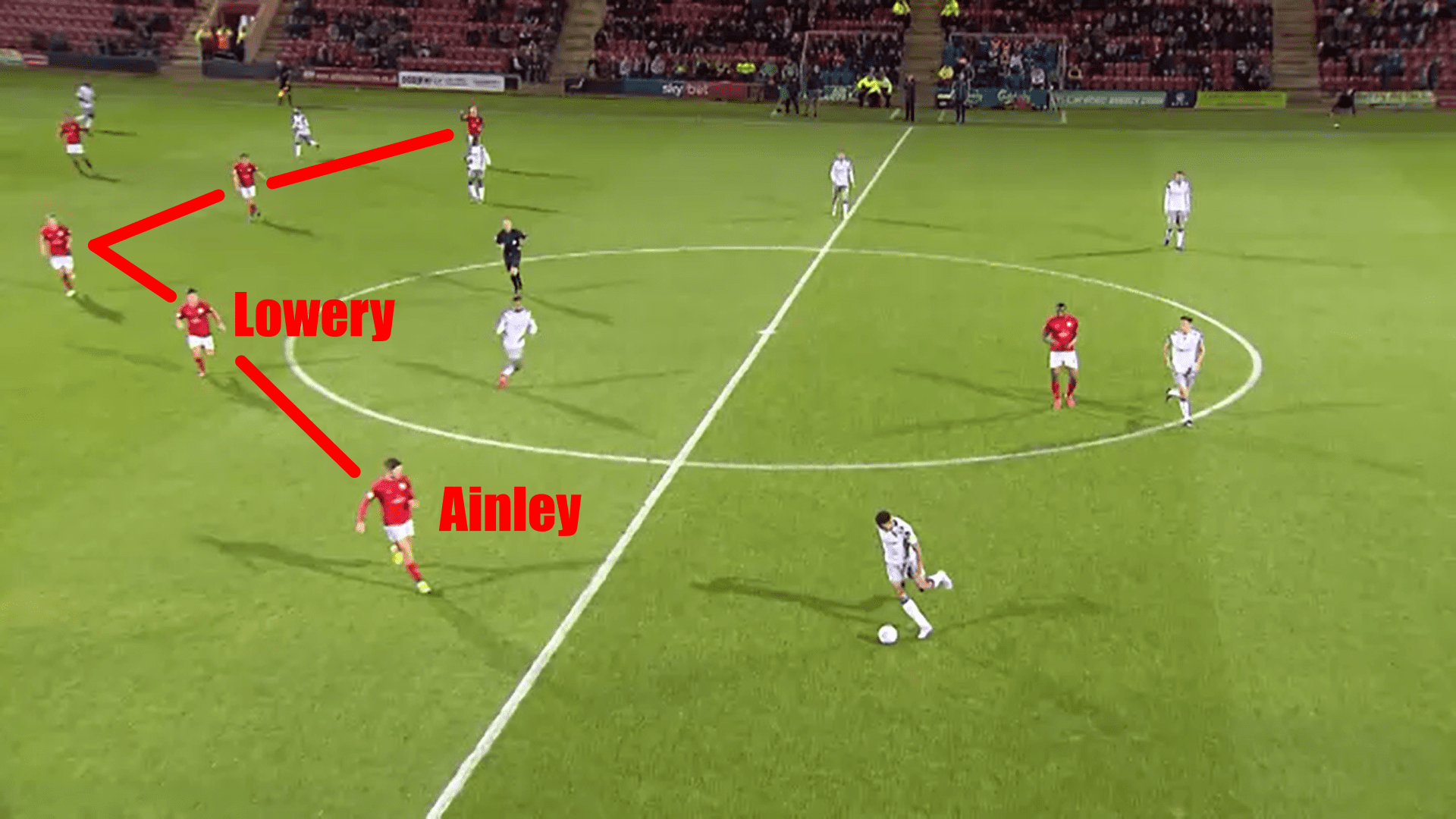
In the following illustration, Lowery’s energy can be witnessed through his single press of the Swindon player in possession, however yet again this is still within the overall structure of the team. Additionally, wide man Owen Dale is also very narrow to Lowery’s right, again with the aim of trying to prevent the Robins’ man playing a line-breaking pass through their midfield and exposing their defenders.
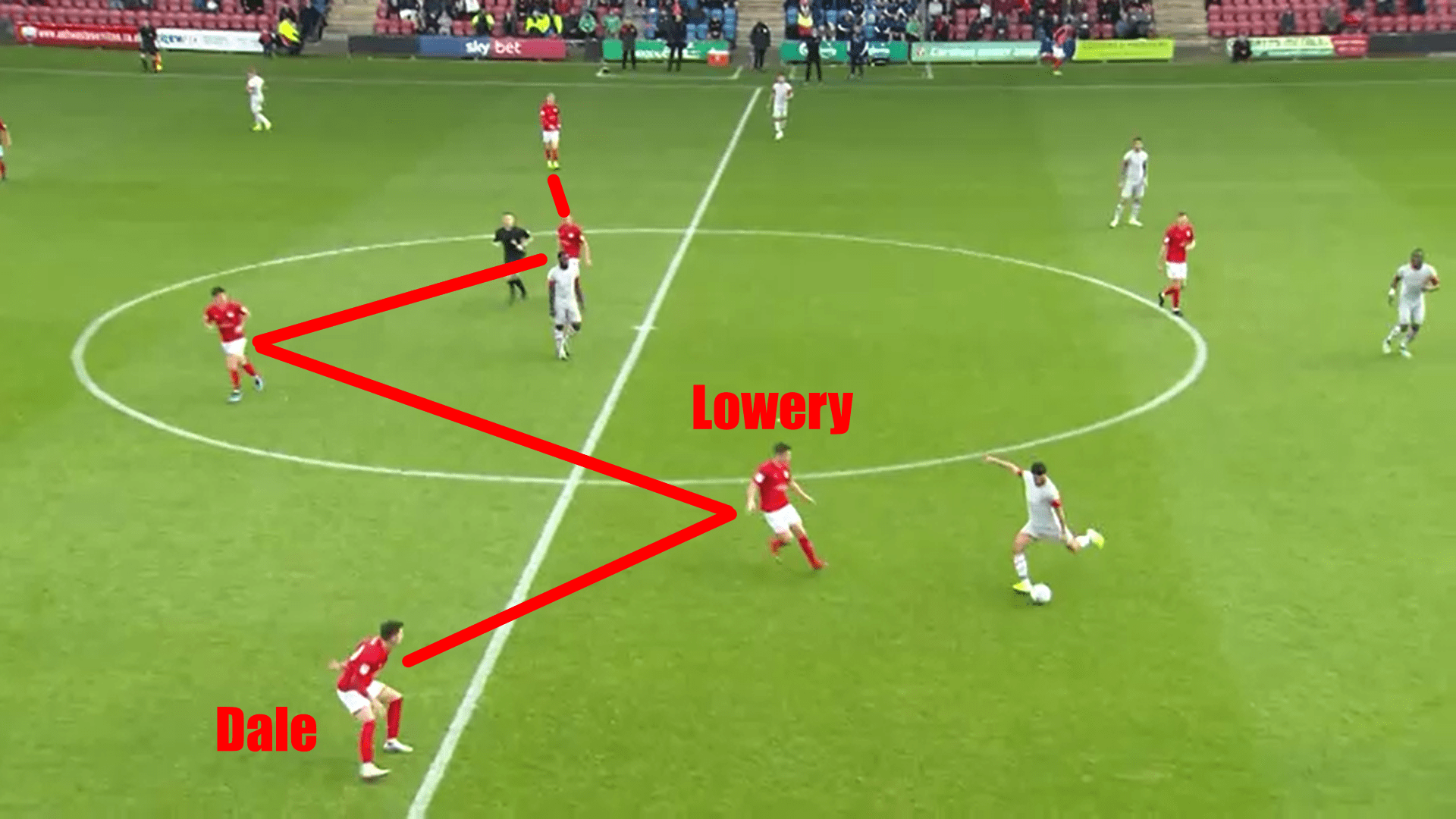
With the central defensive cohort possessed by the Alex, it is a major target of their defensive structure to try and prevent their central two from being exposed in one-versus-one or two-versus-two situations, given their relative lack of mobility. Nicky Hunt (36 years old), Eddie Nolan (31 years old) and Olly Lancashire (30 years old) are all players who struggle when the play is in-behind them due to their poor speed and agility, which is why the Railwaymen’s defensive structure is aimed at trying to prevent this. As a result, on the occasions that they are exposed to such situations, it can pose a serious threat to Crewe’s rearguard.
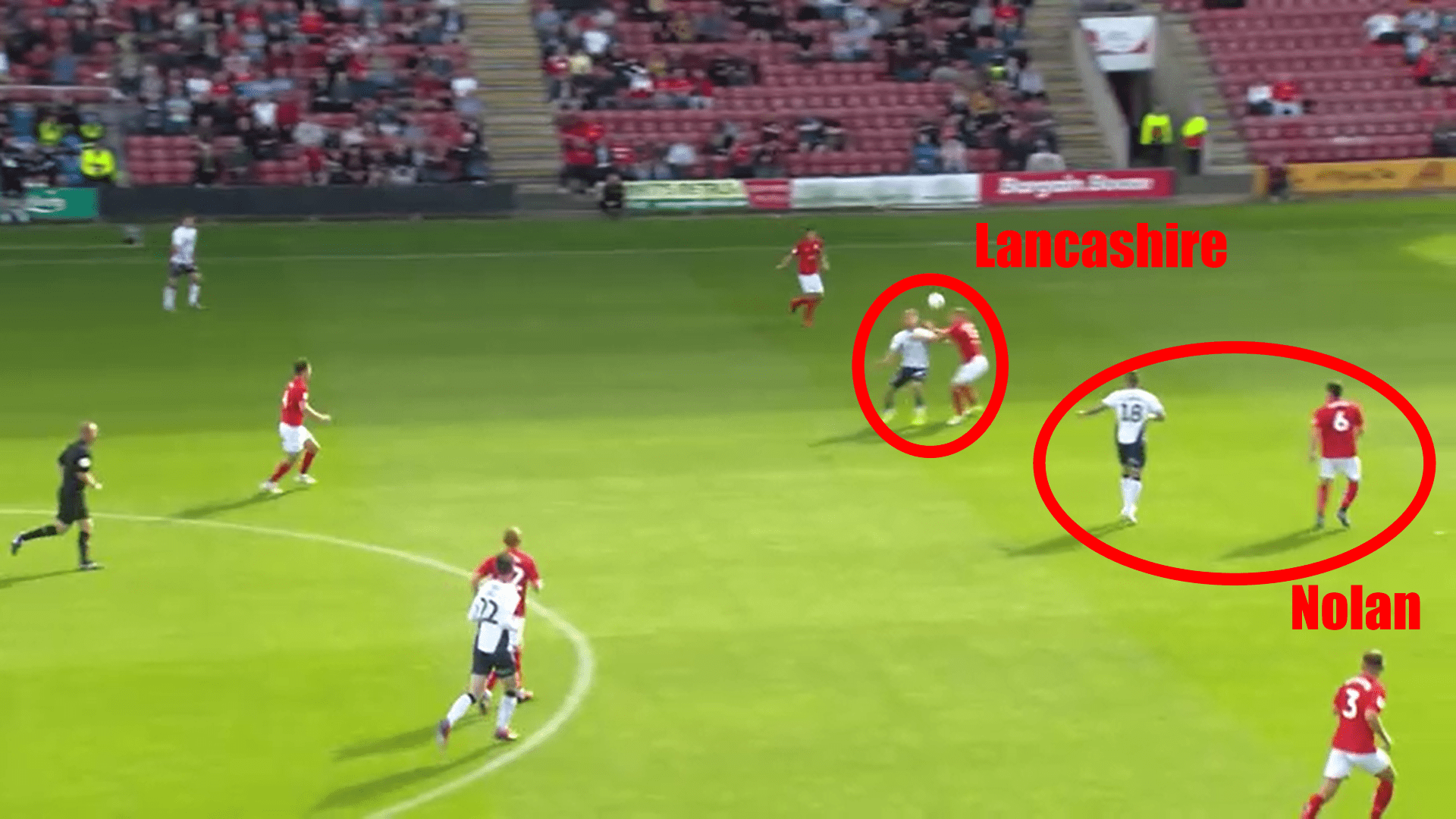
In the below example, following a routine long ball from the goalkeeper that was allowed to reach the back four, Lancashire and Nolan are initially both in combat with their respective forward (as circled), goalside of both. However, with only two touches between the Cambridge attackers the following image can be seen, with the United forward bearing down on goal and ultimately scoring. From what was a relatively safe position to be defending from, with both defenders behind their forwards and the ball in front of them, Crewe’s lack of physical vigour was highlighted and exposed – which is exactly why they aim to prevent these instances from happening.
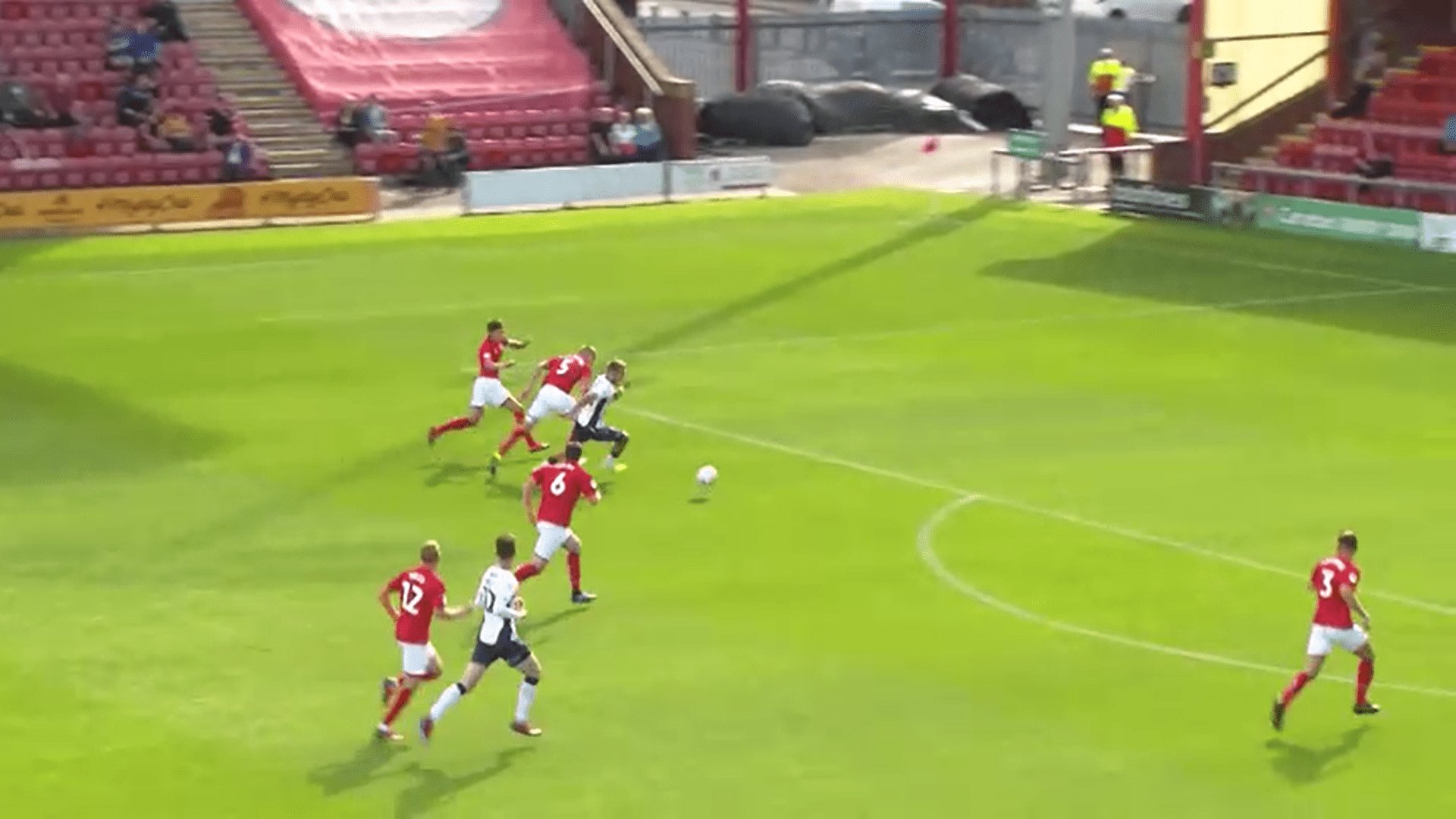
Aside from being compact when defending near their own goal, they also look to commit men high up the pitch when the opposition have the ball with the hope of creating a turnover of possession in their favour. This is done so still within their overall system, with the striker (usually Porter) being the first line of the press followed by the two wingers and two of the central midfielders. They look to cage opponents in and prevent them from being able to easily pass their way through the thirds and into Crewe’s defensive areas. An example can clearly be seen below, with the four men behind Porter denying Carlisle (in this instance) the space to be able to progress the ball easily out of their defence.
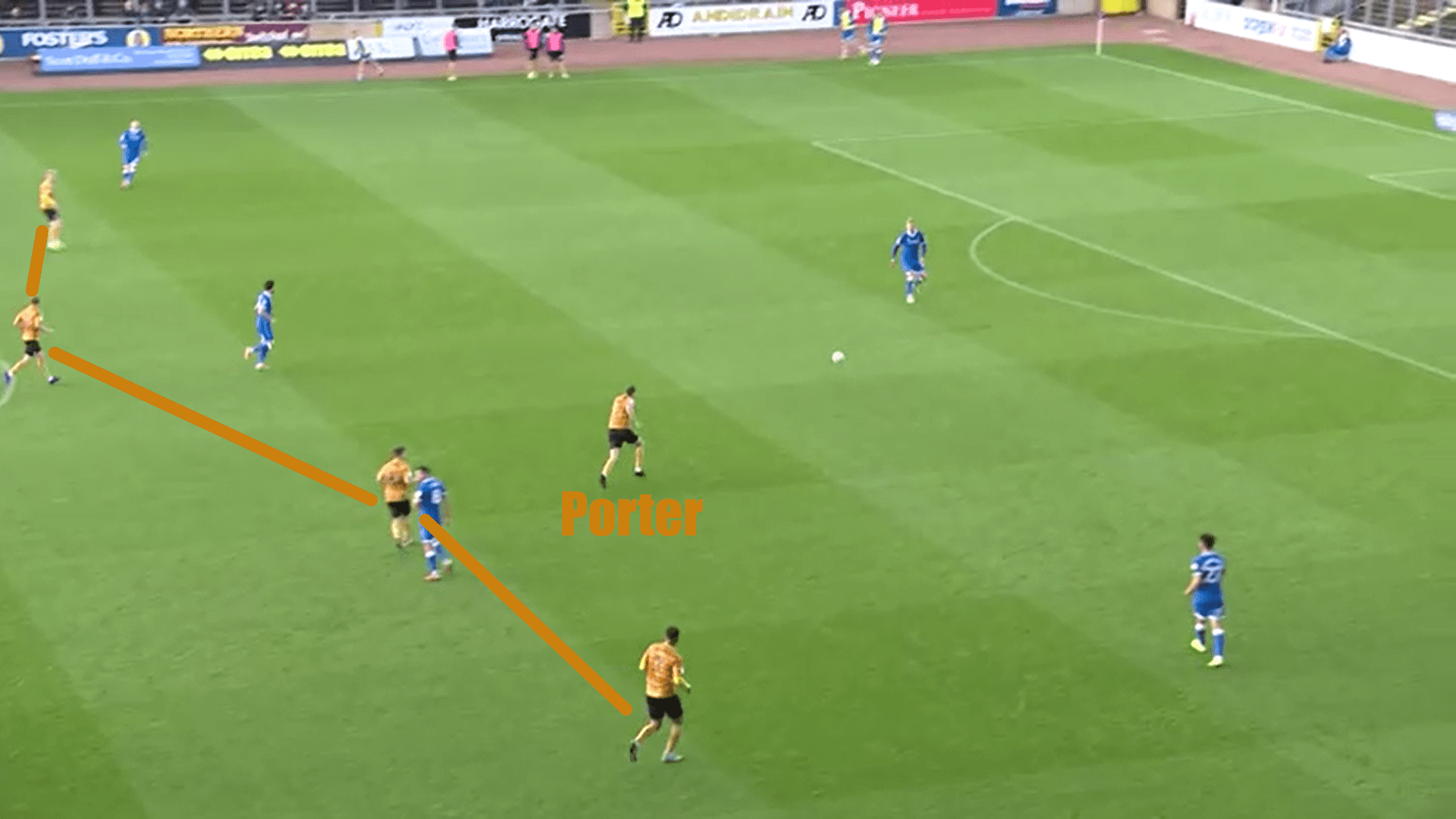
This approach does not come without danger, though. If teams are able to move the ball out of their defence and bypass this initial press, they can isolate the one remaining defensive midfielder not pressing and create an overload on him with the intention of beating him and then running at the now-exposed back four.
One such occasion is witnessed below, where Carlisle were able to play through Crewe’s high press and break out onto Wintle, who was underloaded 1 v 2 and thus saw himself bypassed and their defence broken onto. This is a weakness of their system, and one that, if teams are brave and bold in possession, could be an area to exploit them on.
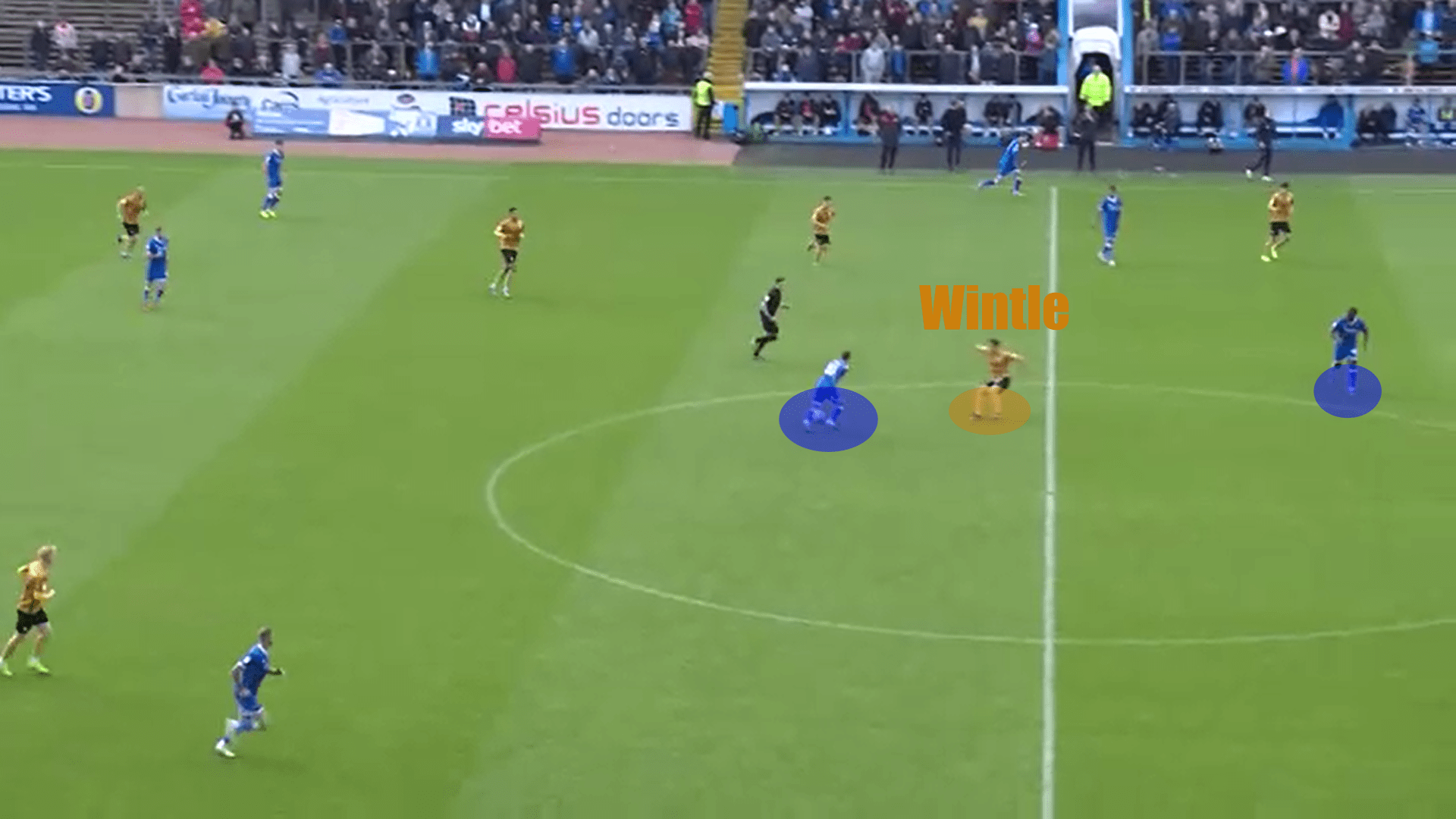
As a side they are committed to overloading areas in order to keep possession and move up the pitch – again, something to be covered later on. Yet this principle is just as key in the defensive stage as it is when attacking – perhaps even more so. When pressing opponents they do so in numbers, so that if they win the ball back they can be lethal in transition; if the numbers were not there in the first place, the passing options would not be available and therefore the rapid transition could not occur.
Even in their defensive third they look to dedicate as many bodies as possible to winning the ball back, as can be seen below. With the four men they are using in this example to hunt for the ball, not only does it give them a bigger chance of winning the ball back through overloading, but they are also able to burst out in a 4 v 3 should they win it as they seek to move up the pitch.
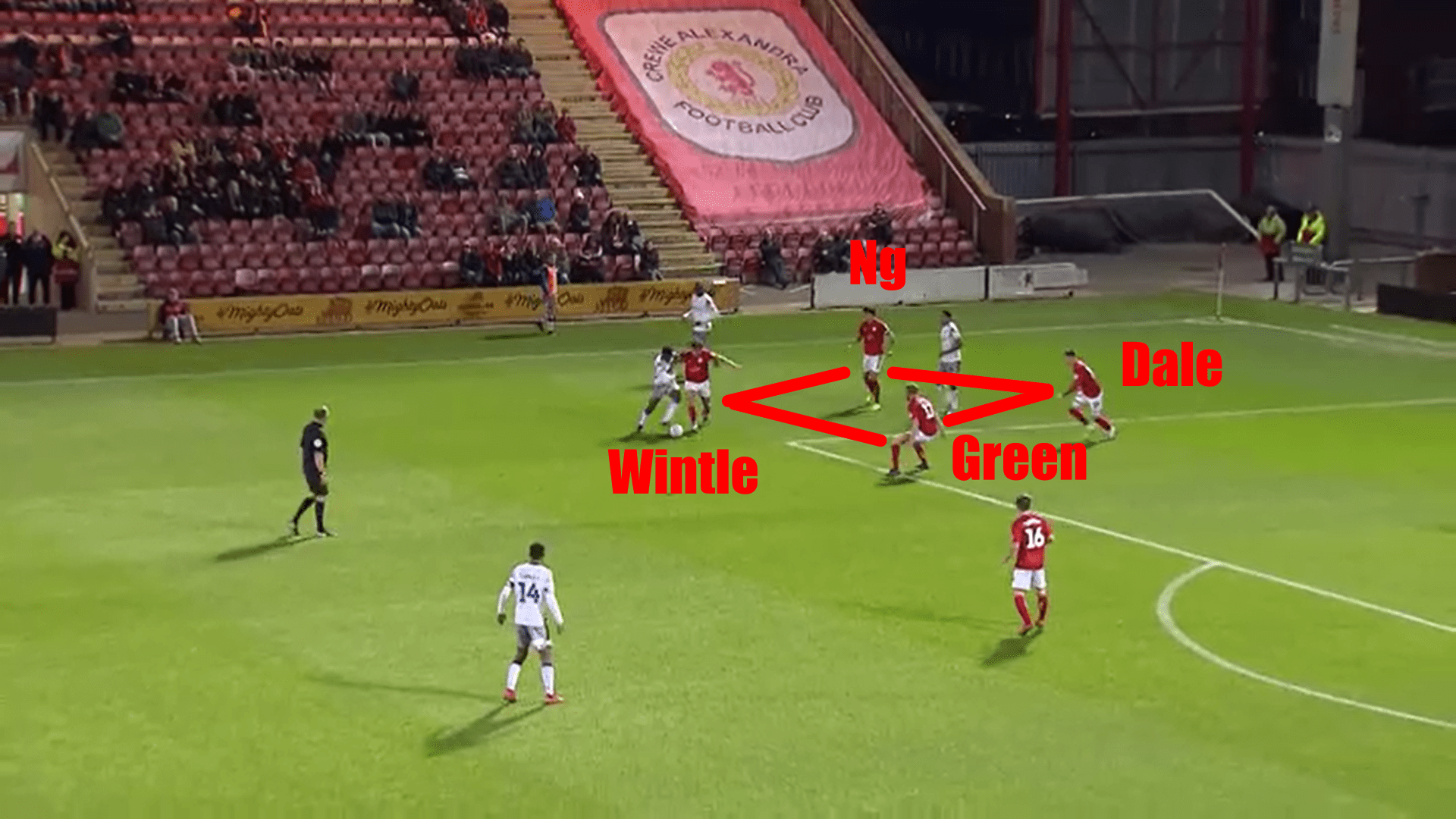
A similar example, albeit in a higher part of the pitch, is witnessed below. Initially they are aggressive in their hopes of pinning Swindon into their own defensive third, committing six players into Swindon’s half (against Swindon’s five) in the hope of regaining the ball. Thanks to an excellent recovery tackle by Green as the Swindon man tries to break away they are able to win back possession, and having pressed with so many men in the first place, this then allows them a plethora of options upon winning the ball, as seen in the second picture.
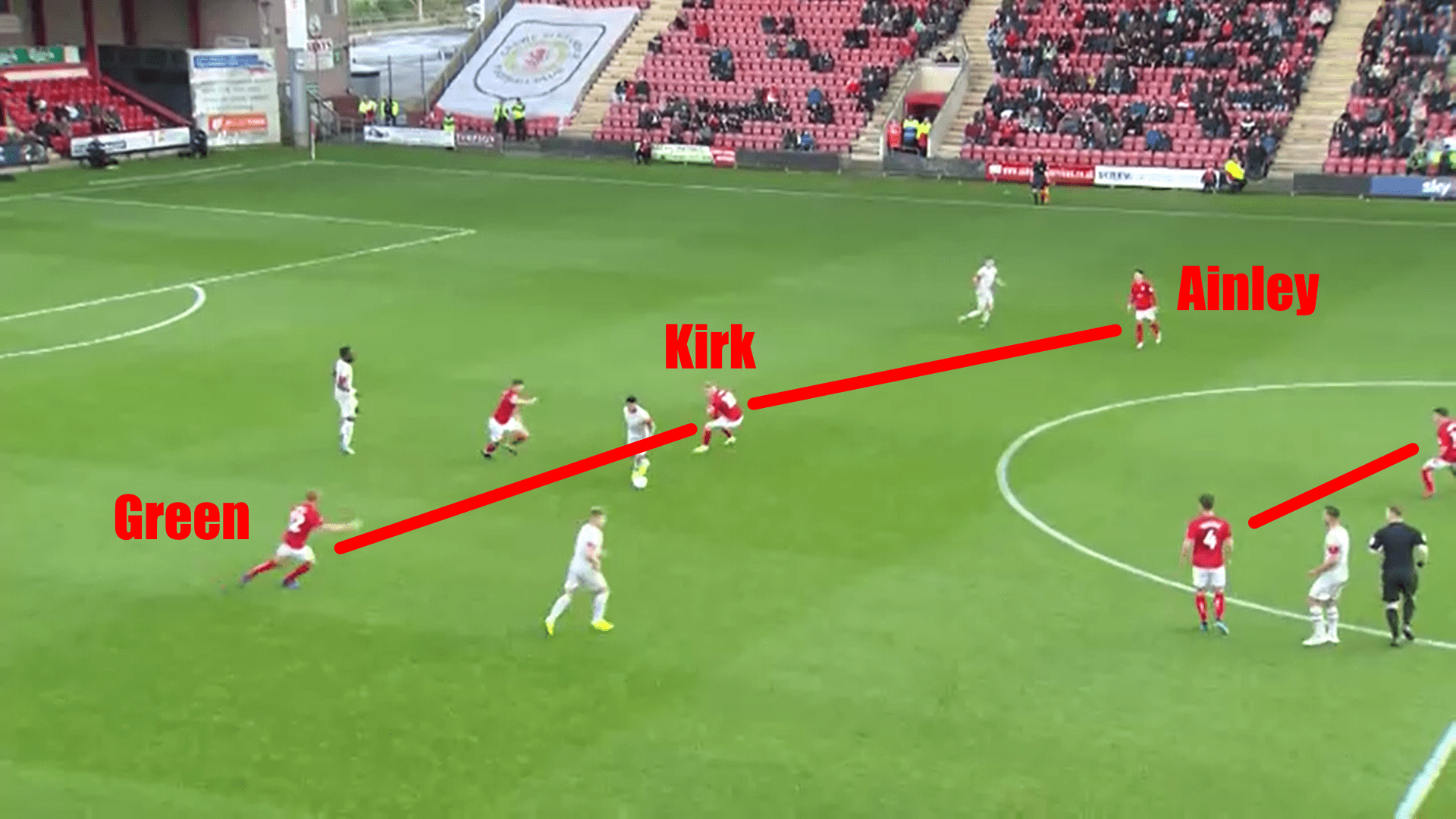
The Alex have gone from an expansive press to an intimate box of six, created in a matter of seconds. This movement allows them to keep the ball moving closely for the first couple of seconds after winning the ball, before they can then expand back out again (as Chris Porter has already begun to do) and look to attack Swindon’s recovering defence.
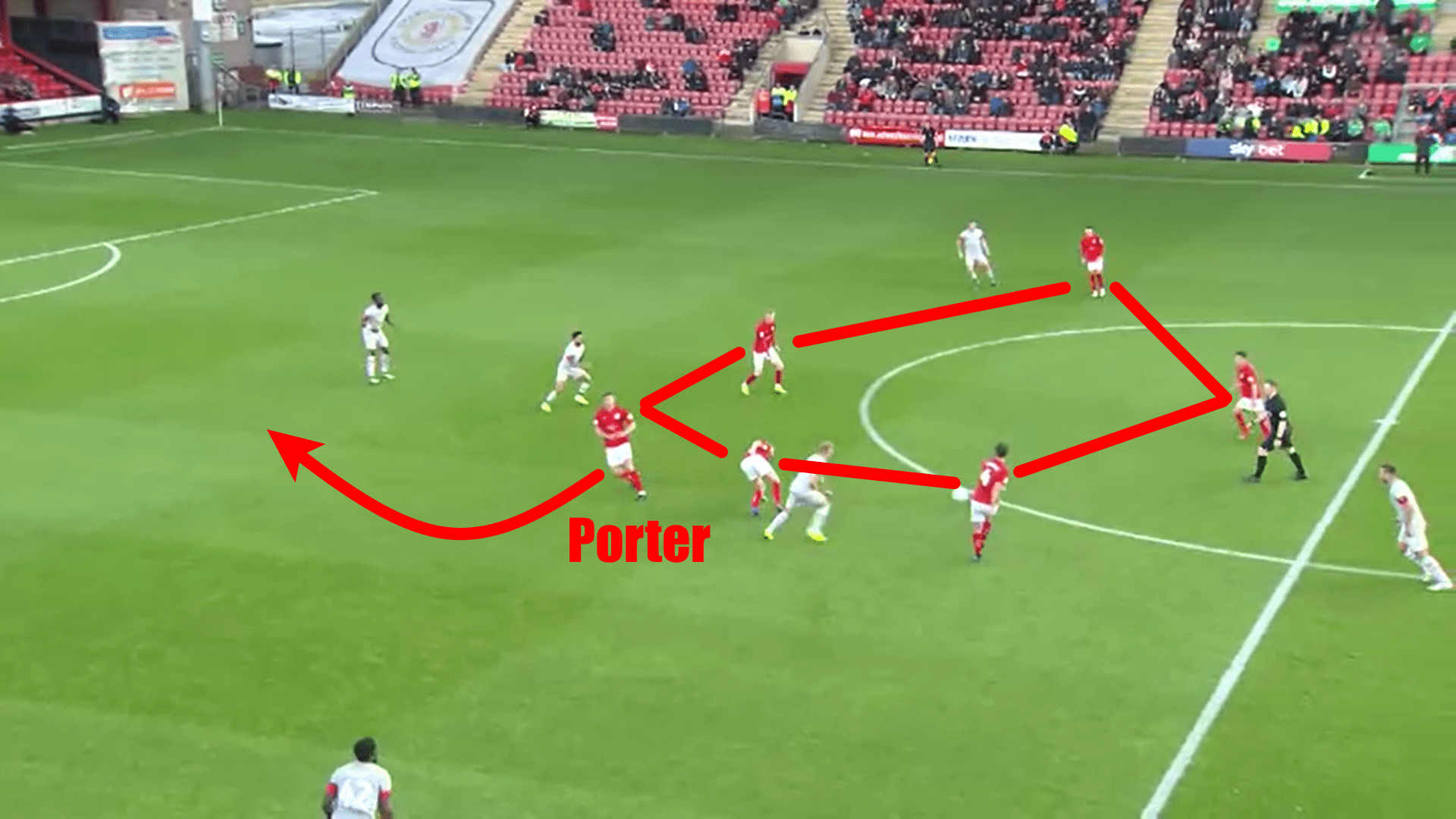
Attacking structure
One of, if not the most significant aspect of Crewe’s ability to attack dangerously is through their domination of the half-space. Using neat interplay and clever positional rotation between wingers, full-backs and central midfielders they are able to pull apart opposing defensive units to create openings in the final third. The technical, tactical and psychological fundamentals within their players that this approach is based upon are: an ability to outwit and dominate opponents in a one-versus-one situation either with or without the ball; an ability to understand how to choreograph movements with a teammate/teammates in order to create, and then subsequently exploit, this now-opened space; and a willingness to make runs that although may not be used by the man on the ball, are vital in the manipulation of the opponents’ positioning.
Even if they are not overloading the half-spaces, Crewe are still more than capable of creating an attacking opening through their synchronised movements that deceive opponents and allow such opportunities to come out – as we will now analyse.
Upon analysing Crewe, a noticeable pattern of play that is frequently used is on their left-hand side and involves Pickering, Kirk and one of the central midfielders (usually Lowery), and it is a sequence that has regularly been used to good effect through the creation of either goals, or goal-scoring opportunities.
This particular pattern invariably starts with the ball on or near the touchline with Kirk, who faces up his man without committing to beating him in a footrace or dribble. As Kirk has the ball, the left-sided central midfielder (in both cases below, Lowery) makes a decoy run diagonally across the front of Kirk and down the line. Whilst this may be seen as a potential passing option, it is actually only done to pull out the opposing midfielder tracking Lowery and thus create a space for the on-rushing Pickering to burst into. When the defender makes his run, Kirk is then able to feed the ball through and allow the full-back to use his speed and trickery when running at the heart of the opposing back four. Two almost identical examples of this are seen below: the first leading to Pickering sliding through a ball for Porter to run onto and slot home; the second to a chance that was not taken.
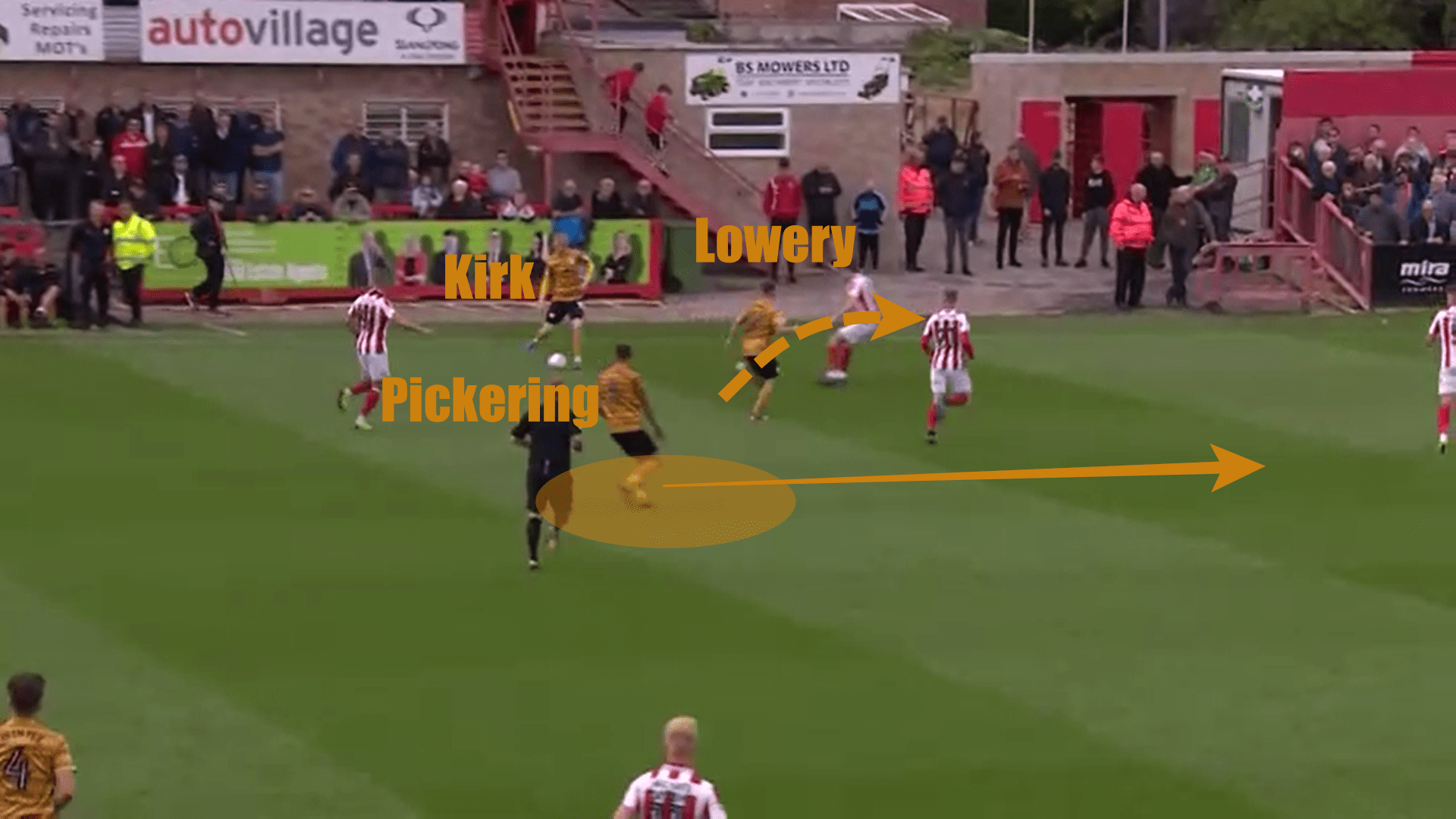
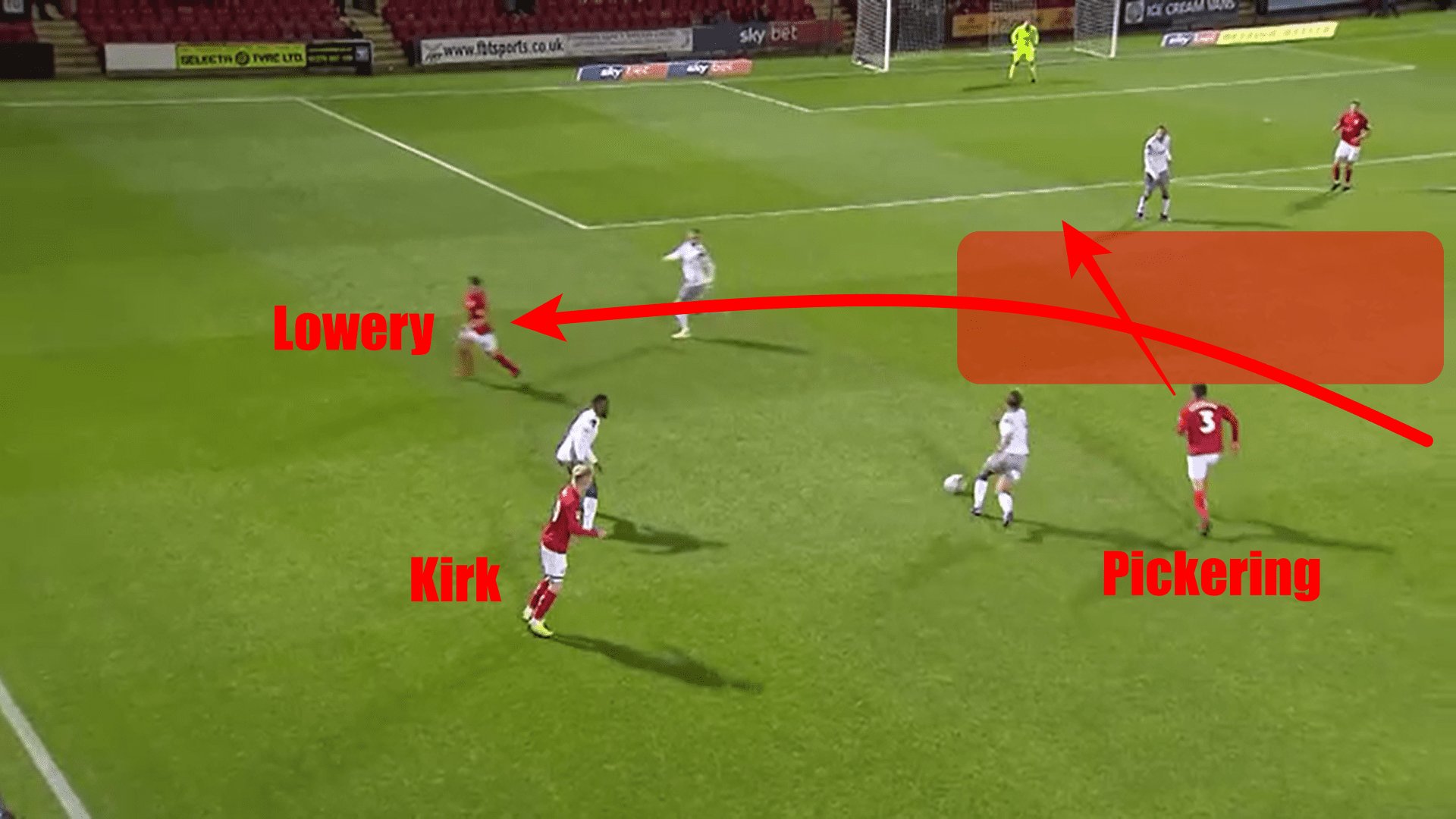
The below image is again another example of the aforementioned pattern of play frequently implemented by Artell, yet with a twist. The combination of movements between the three (however it is Green making the run from midfield here, not Lowery) has altered, with Pickering running with the ball whilst Kirk makes the run inside following the space-creating run initially made by Green. This is an indication as to not just the level of flexibility within Crewe’s attacking unit, but the understanding that players have of all the roles within the system, not just their own, which leads them to be able to recreate any of the required movements instead of the one they usually. individually produce.
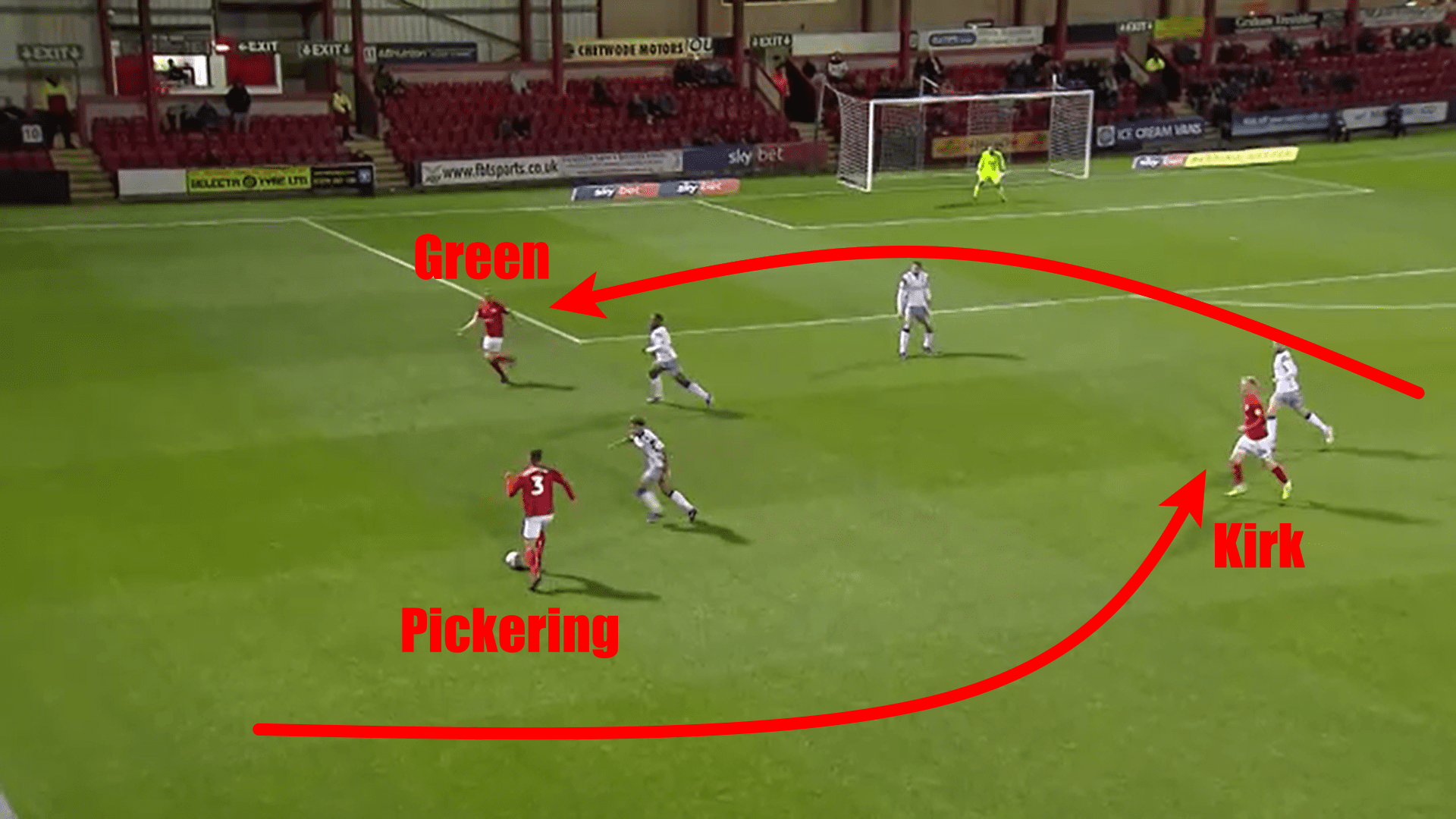
It must be noted that this is not the only string to their offensive bow. In Porter they possess an experienced, battle-hardened target man who knows how to perfect the role required within their overall system. The 35-year-old is key to his side for his physical prowess and nous, allowing them to be more direct if they have to be and therefore preventing them from being too predictable.
Whilst they frequently look to make inroads through the half-space with the ball on the floor, they are also adept at manipulating space with the end goal of producing a cross into the box for Porter to attack. The powerful striker is deadly with crosses coming into the box, and so the Railwaymen, rightly so, look to make the most of this strength.
In the below two examples they have been able to fathom a crossing opportunity in both: the first by Ng cleverly holding his run to give an option to lay the ball back to and swing in a cross; the second through Daniel Powell’s run taking away the man initially blocking the crossing opportunity, which allowed Jones to play the ball into Porter. Both of these resulted in goals, which is a clear indicator as to the effectiveness they have as a side at doing so.
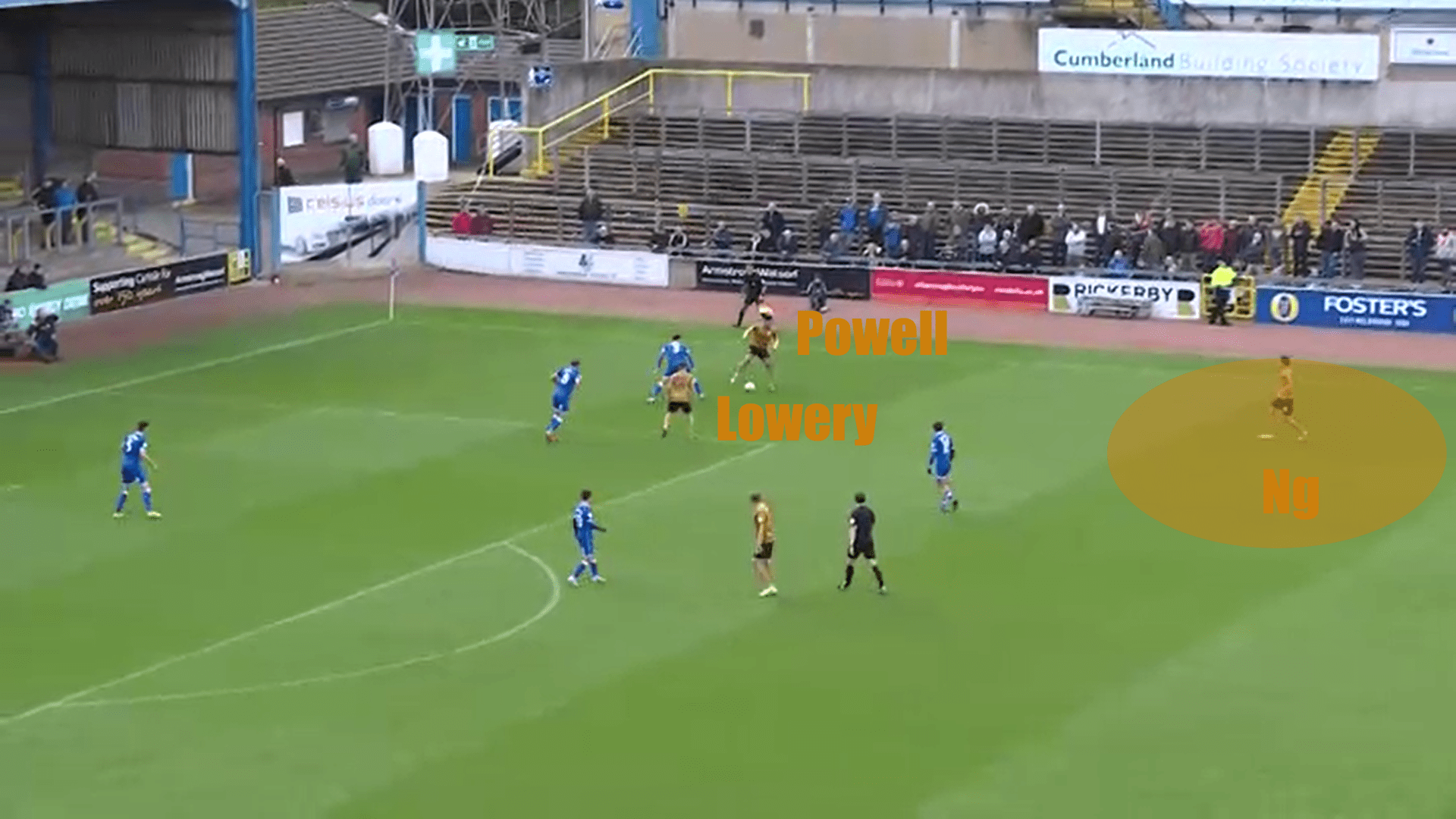
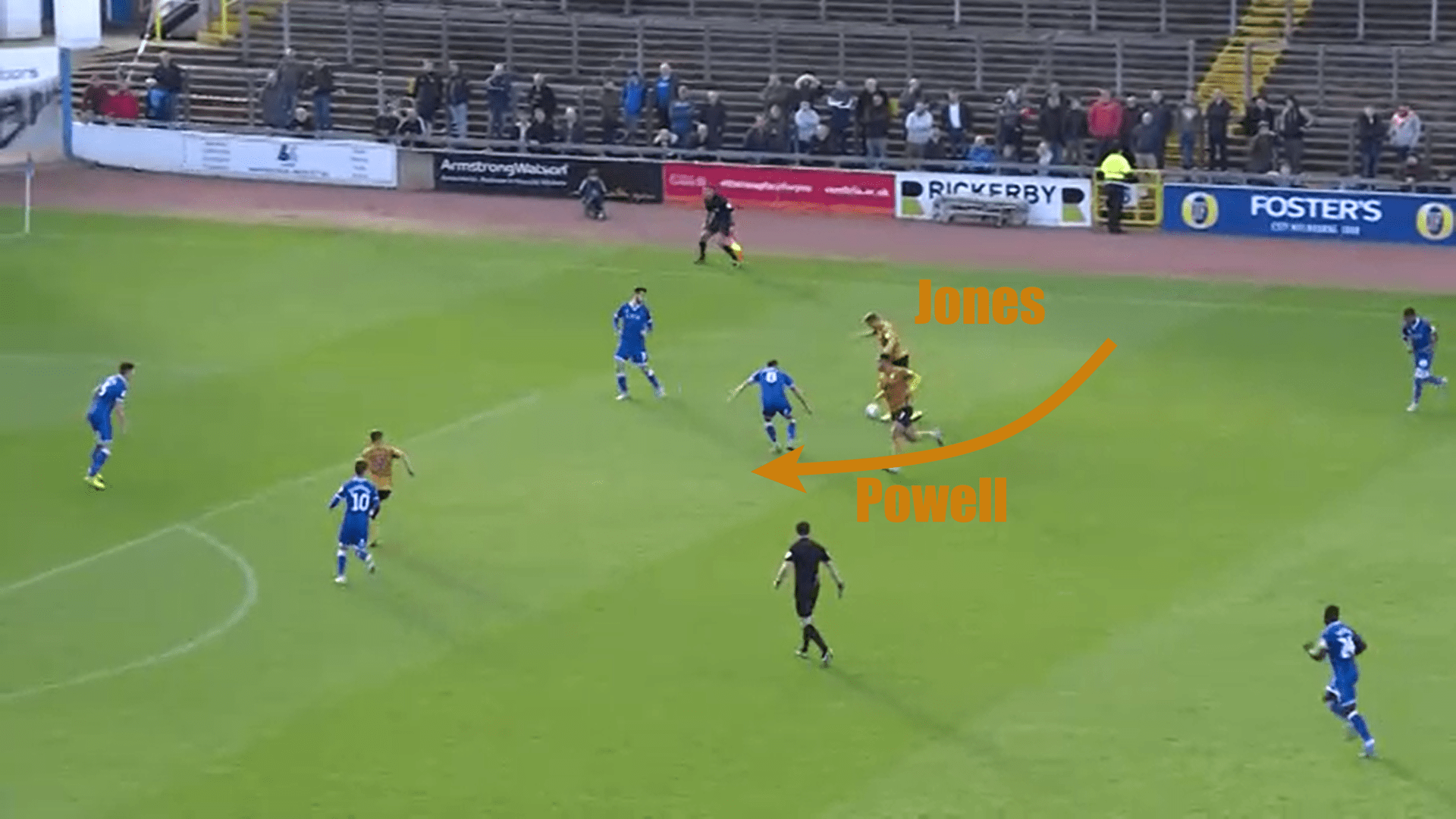
Aside from benefiting from Porter’s strength, hold-up play and aerial ability in the final third, he is also a vital part of their initial attacking phase from a deeper position. As a side they structure themselves so that they can capitalise on Porter retaining the ball, getting plenty of runners off him for second-balls and/or flick ons to allow them to gain from his physical expertise.
The pace and energy they possess from their midfield is perfect for this role, as they are able to react instantly to any lay-off or knockdown and thus look to attack instantly.
It can be seen below the number of bodies they commit in support of the 6’1” frontman, with runners aplenty in various vertical lines to ensure they stretch the pitch and therefore create more space and more options to play to.
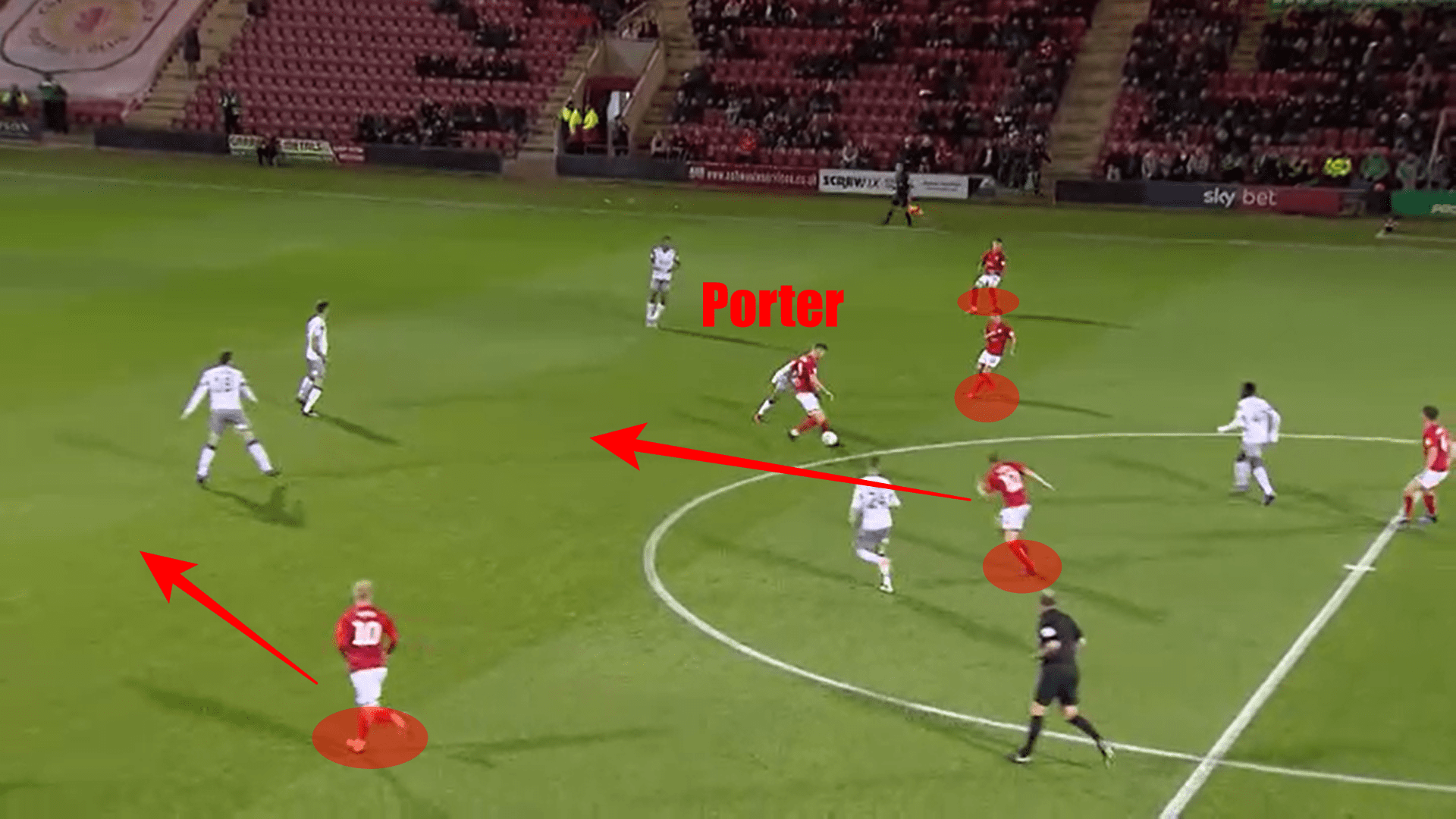
Their commitment to benefitting from this is also highlighted in the below image, with three players on the front foot to regimentally follow up Porter’s header should it be knocked back down to any of the on-rushing triumvirate. Furthermore, knowing the likelihood of him winning the flick (as he did), Kirk too is on the front foot and already gambling on the ball reaching his run, moving towards its likely destination in order to increase his chances of getting to it before the defender. Although the Swindon player did reach the ball first, his desperately weak touch was seized upon by the advancing wide man, who bore down on goal and slotted home.
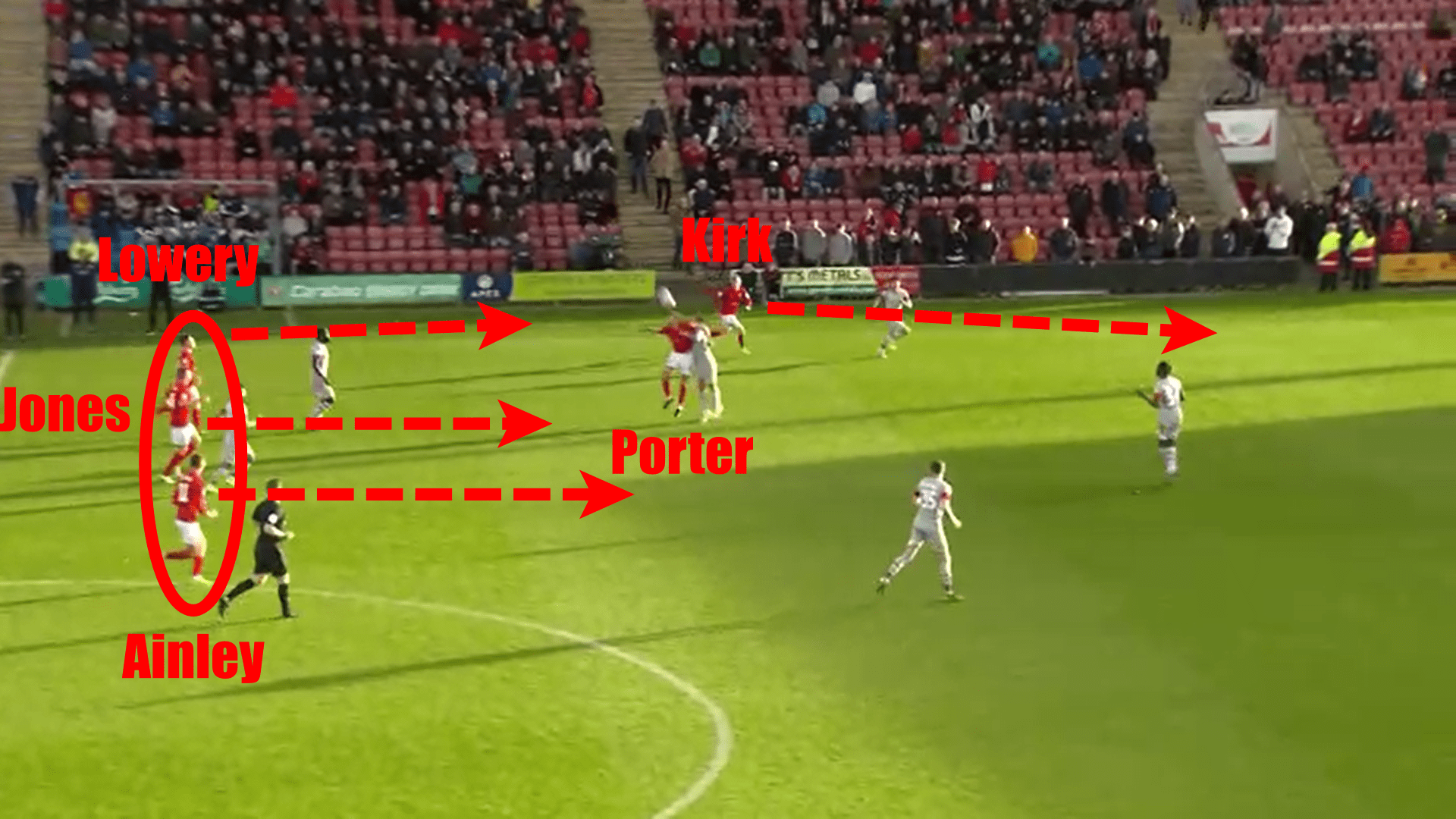
Conclusion
To an outsider looking in, there may be a degree of confusion as to why Crewe remain top of the table heading into November. However upon inspection, it is clear to see that they have a fluid, well-rehearsed, successful game plan that is known inside-out by all players in the squad – not just the team – and thus allows them to combine defensive solidity with a variety of methods of attack. It seems that the unfancied tag has suited them well so far this season – and so they will be secretly hoping they continue to adopt this label as they search for a return to the third tier.

If you love tactical analysis, then you’ll love the digital magazines from totalfootballanalysis.com – a guaranteed 100+ pages of pure tactical analysis covering topics from the Premier League, Serie A, La Liga, Bundesliga and many, many more. Buy your copy of the October issue for just ₤4.99 here






Comments